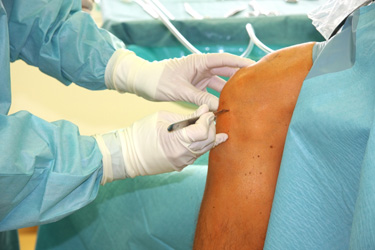
Minimally invasive knee surgery
A variation of traditional total knee replacement surgery, called minimally invasive surgery, is currently being used by a small but growing number of orthopedic surgeons. In minimally invasive knee surgery, the surgeon makes a much smaller incision, typically three to five inches, along the side of the knee cap. This allows the surgeon to work between the fibers of the quadriceps muscles instead of cutting through them. The surgeon then removes the diseased bone in minute fragments, which reduces the amount of trauma to the surrounding tissues. The end result is, hopefully, less pain, decreased recovery time, reduced hospitalization (down to 1 to 2 days instead of 3 to 4), and better mobility in the knee because there is less scar tissue formation.
Not everyone is a good candidate for minimally invasive knee surgery, however. Individuals who need a second knee joint, those who have large knee joints or joints that are severely deformed, obese patients, and patients who have injuries to the tendons and ligaments around the knee do not qualify. Because minimally invasive knee surgery is still relatively new, little is known about how the intermediate and long-term results will compare with those of traditional knee replacement surgery.


